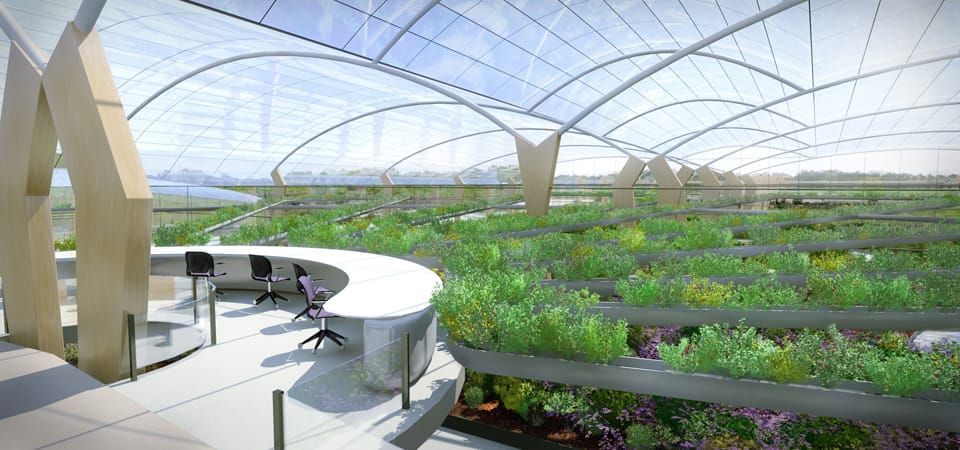Next Level Greenhouse
Industrial agriculture has run into ecological and social dead ends here and there, which is why there are more and more new visions, concepts and designs to completely rethink agriculture. Sustainability is a key driver here, which is intended to bring tomorrow’s agriculture into harmony with nature and society. The Except Integrated Sustainability agency has unveiled the Polydome, a revolutionary design for greenhouse agriculture that aims to offer the possibility of food production on a commercial scale without impacting the environment. The highlight: While today’s greenhouses usually produce only one type of plant, a symbiotic system is created here, a polyculture system – as the name suggests – in which diverse plants and animals co-exist. Plants, crops, animals, and insects are strategically interwoven to connect waste, water, and energy flows and take advantage of different space and light conditions.

The Polydome system strategically weaves together a variety of plants and animals, utilizes every inch of the greenhouse, and is designed to eliminate the need for synthetic fertilizers and pesticides. Furthermore, it promises high yields (60-90 kg per square meter) and diverse services (over 50 crops, two varieties of mushrooms, chickens, eggs, fish and honey), so even a small polydome system should provide a varied food supply. Through this, the creators:inside promise an almost unbeatable efficiency: it is estimated that even cities as densely populated as New York City could cover the majority of their own food supply using the available roof space through the use of Polydome. A less dense city like Rotterdam could meet an estimated 80% of its food needs by using only 3% of its land area.
